The weeping widow mushroom (Lacrymaria lacrymabunda) gets its name from a fascinating characteristic – tiny droplets that form on its gills when it is young. It makes it appear as if the mushroom is crying. Sometimes, they even appear in graveyards. And because the caps are covered in thin fibers, almost like a veil, they earned the common name weeping widow. This is not an edible species but it is a really neat find.
Lacrymaria echiniceps may be a synonym or a separate species.
- Scientific Name: Lacrymaria lacrymabunda
- Common Name: Weeping widow mushroom
- Habitat: On the ground in disturbed areas
- Edibility: Mixed – some say it is edible, others report getting sick from eating it. There is not any widely available documentation of eating this species. We do not recommend consumption.
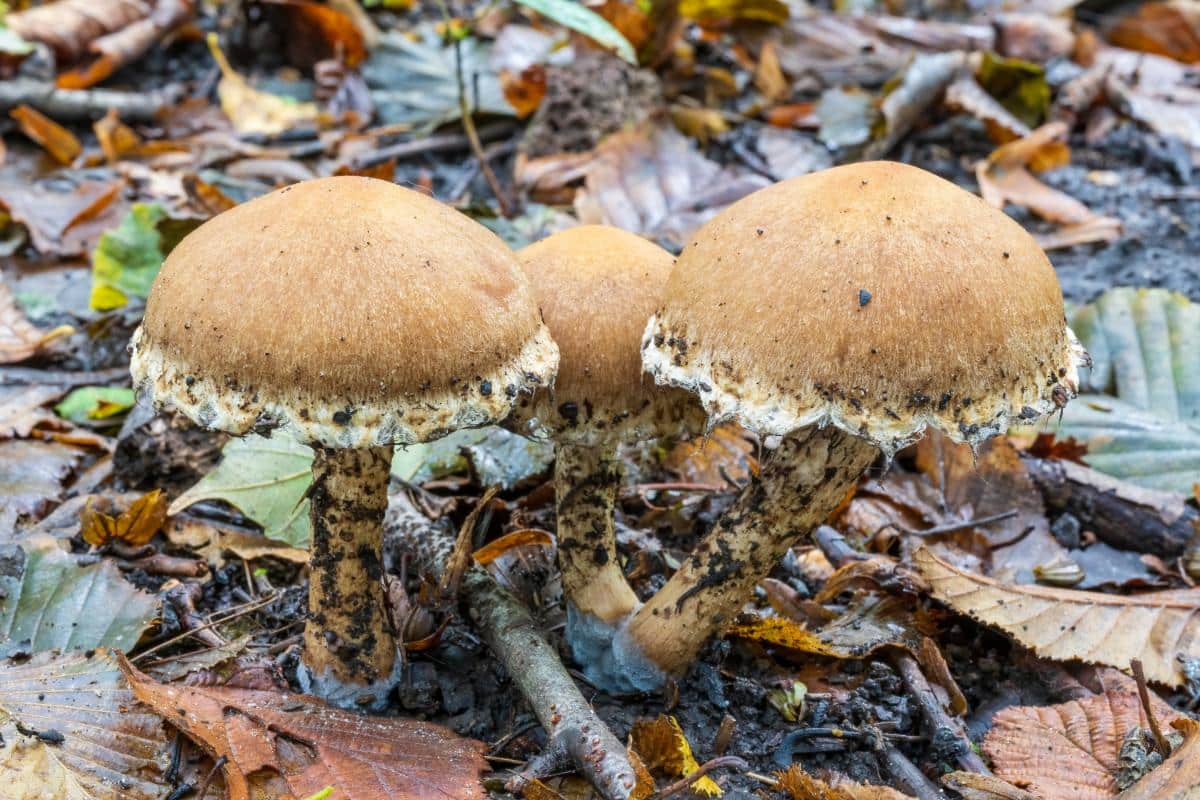

Jump to:
Weeping Widow Mushroom Identification
Season
The weeping widow mushroom fruits from June through November.
Habitat
This mushroom has a wide geographical range. It’s a common throughout North America, Britain and Ireland, mainland Europe, Central America, northern Asia, and New Zealand.
The weeping widow prefers disturbed ground and that makes it quite adaptable to various environments. It is common in urban and suburban areas. You might spot them growing near the edges of gardens, especially where soil meets paved areas. They’re saprotrophic, meaning they help break down organic matter.
This mushroom grows in:
- Grasslands and roadside verges
- Woodland clearings and edges
- Gardens and parks
- Near paths and paved areas
- Gravel driveways


Identification
Cap
The cap of the weeping widow starts bell-shaped and gradually flattens as it matures. It grows to an average of 1.6 to 4.7 inches in diameter. The cap is covered in reddish-brown, hair-like fibers that create a woolly appearance. Small fibers often hang down from the cap edges, like a draping veil. With age, the fibers may degrade or wash off the cap so it is bald and smooth.
The center of the cap has a raised central bump (umbo) but the height and noticeability of it varies widely. The central bump is often there but not super distinctive. Often, there are yellow and clay-brown streaks radiating from the center of the cap.
Gills
Young weeping widow mushrooms have a partial veil covering the gills. This is a yellowish fibrous cobwebby like material that protects the gills as the spores develop. As the mushroom ages, the veil breaks to reveal the gills. Remnants of the partial veil often hang down from the cap.
The gills start out yellow-brown but they turn darker with age and have a mottled appearance. The gills have a unique feature – they can hold black water droplets when moist. These droplets give the mushroom its “weeping” characteristic.
Weeping widow mushroom gills are crowded and narrowly attached to the stem. There are many short gills interspersed with the long gills that attach to the stem – the short gills down make it all the way to the stem.
Stem
The stem measures 2-4 inches tall and is fibrous in texture. It is pale brown, and the color deepens toward the base. There is a ring zone near the top of the stem, which gets stained black from falling spores. It often looks like someone took a Sharpie marker and drew a line around the top of the stem. Above the ring, the stem is lighter colored to almost white. Weeping widow stems are hollow.
Taste and Smell
The weeping widow has no distinctive odor or taste.
Flesh and Staining
The flesh is whitish to watery brownish and doesn’t change color when cut. Its texture is fragile and brittle.
Spore Print
This mushroom has a very dark brown to jet-black spore print.
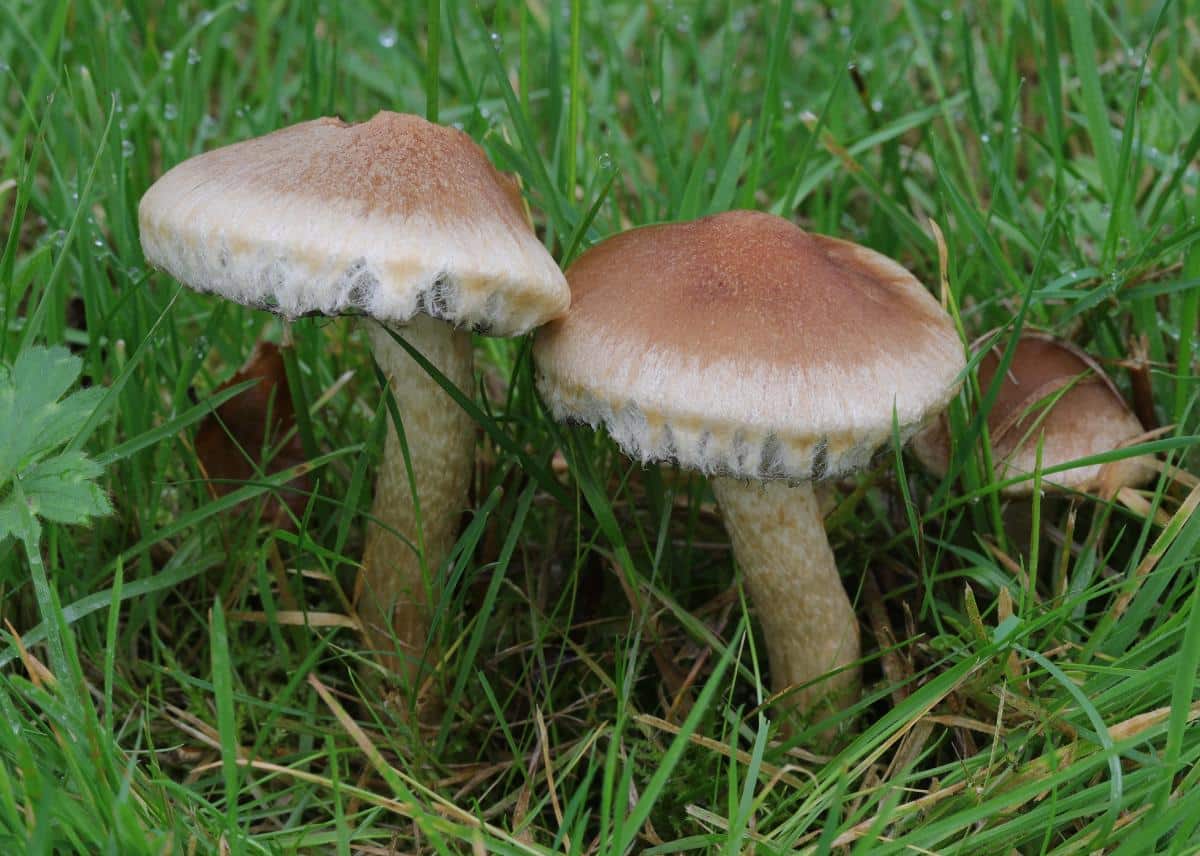
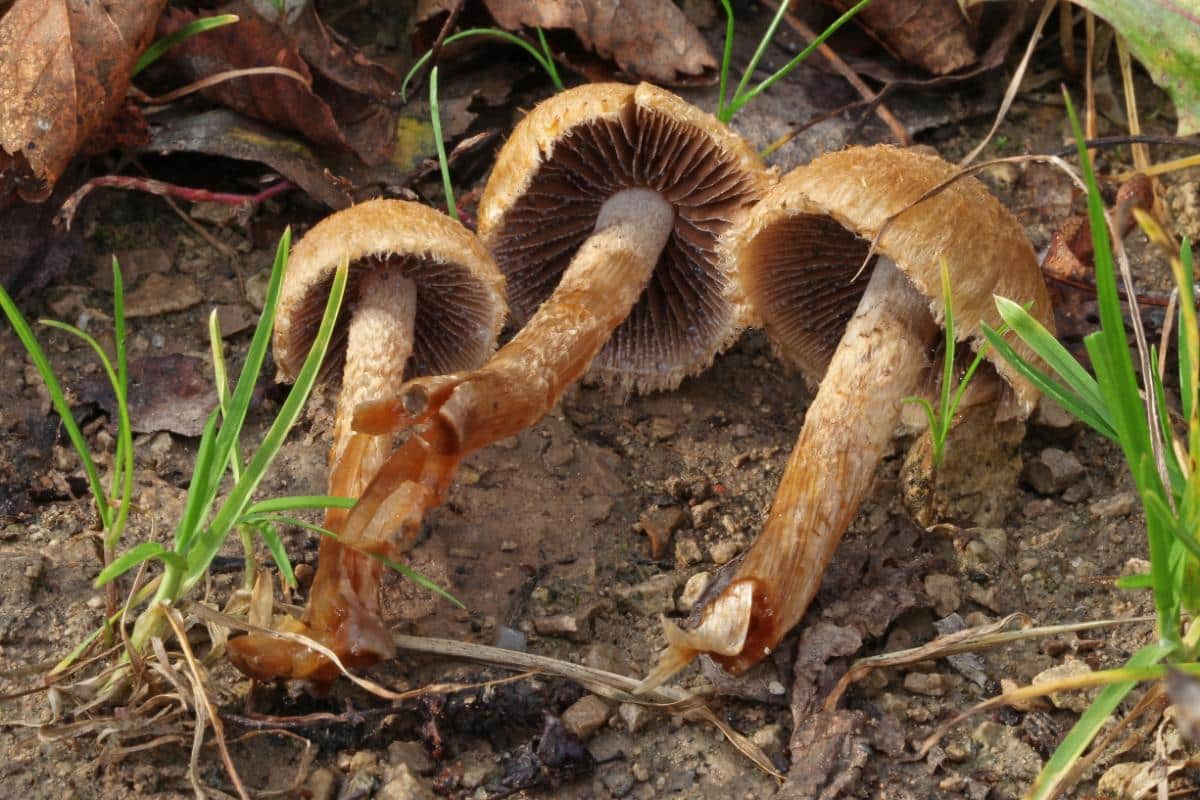
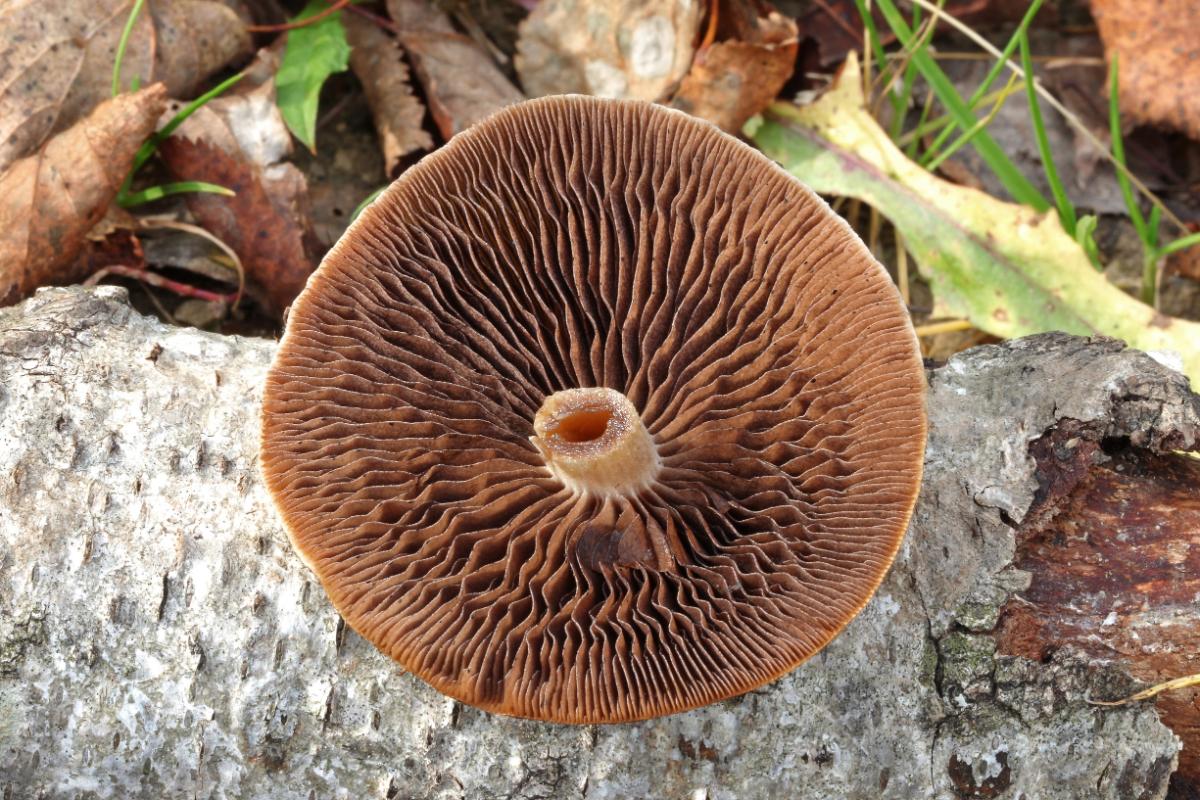

Weeping Widow Mushroom Lookalikes
Agaricus species
Agaricus mushrooms also grow on the ground and frequently appear in disturbed areas, which is how confusion usually starts. When both types are young, it’s pretty easy to tell them apart. Agaricus have pinkish gills, and the weeping widow mushroom has yellowish gills. However, as they mature, both their gills turn blackish and look very similar.
There are several key differences, though. The weeping widow has a bell-shaped, densely hairy cap with a distinct upraised center. The cap surface is reddish with yellow and clay-brown tinges, which is different from the Agaricus’ grayish to whitish caps. Most Agaricus species also have a fleshy ring around the upper part of the stem. The weeping widow usually has a black ring marking around the upper stem, but it is just a marking, not actual mushroom flesh. It looks like someone took a black Sharpie to the stem.
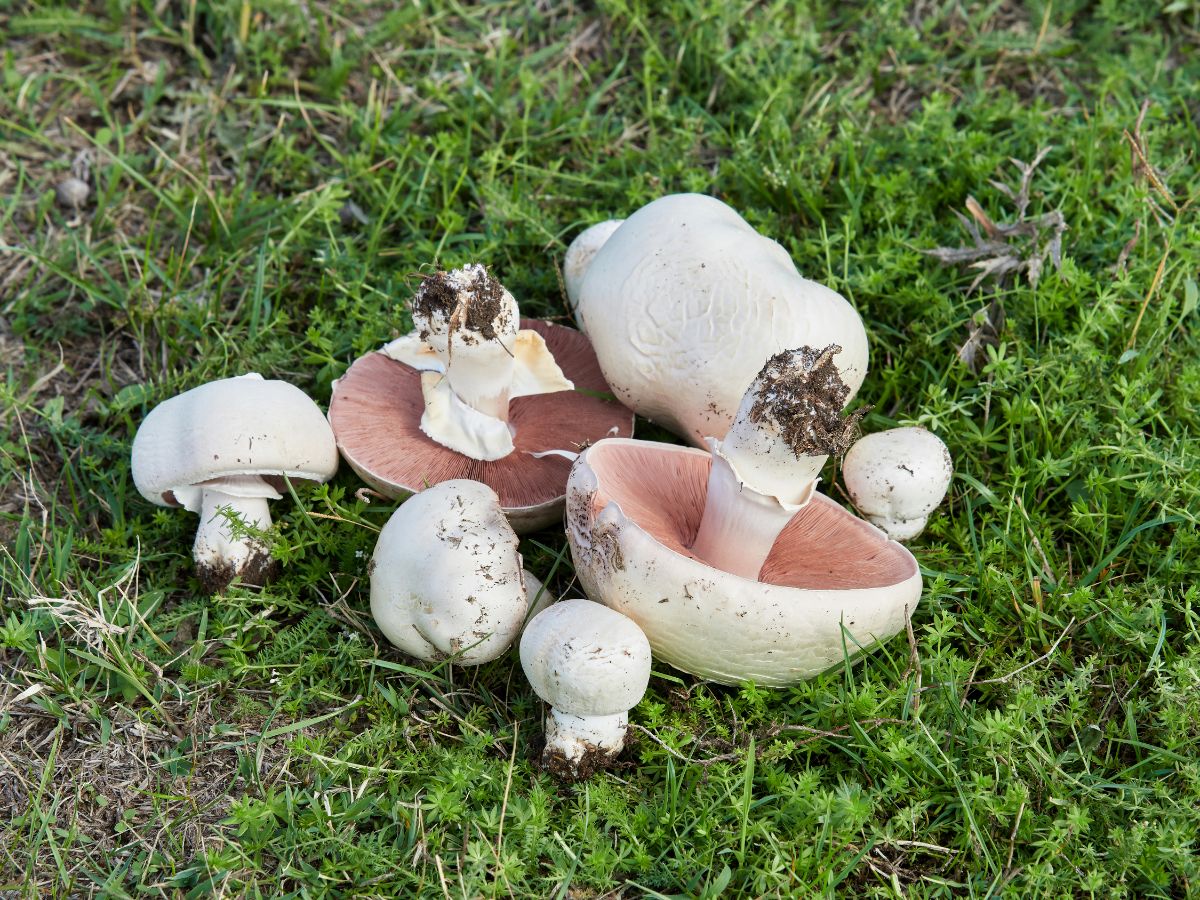
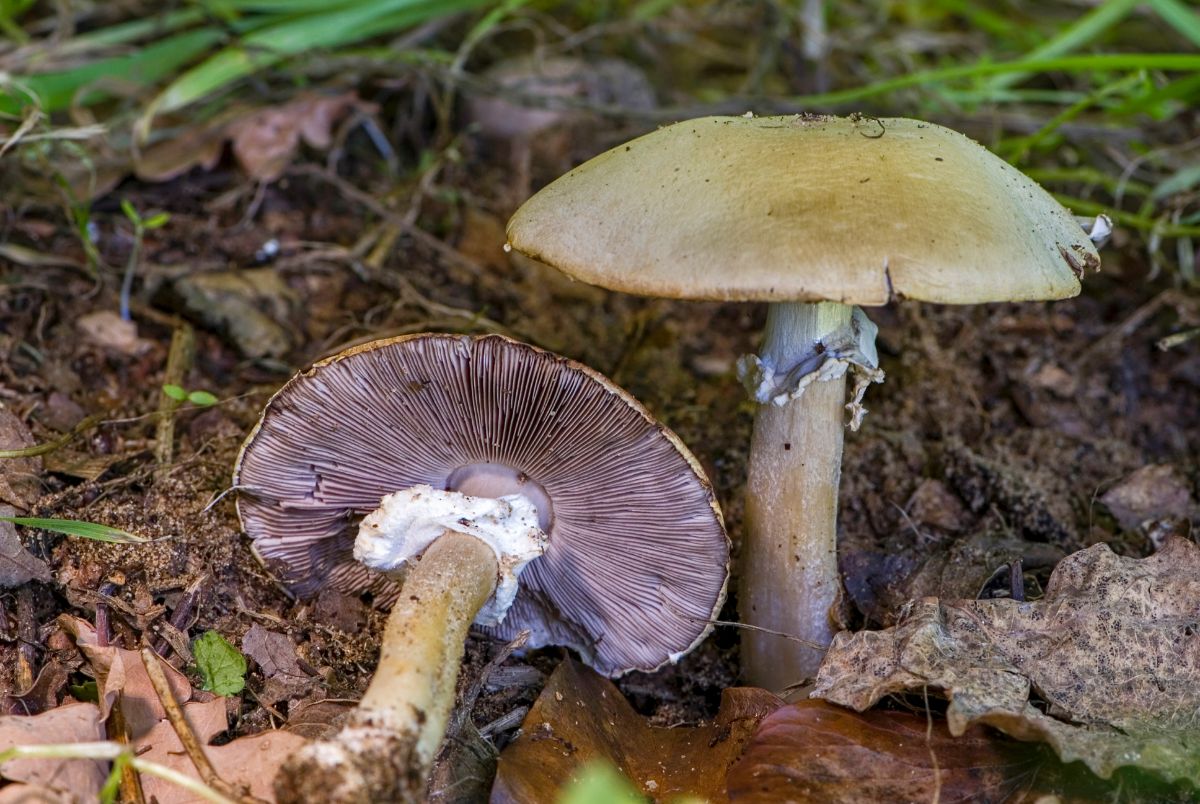
Brittlestems (Psathyrella)
These are both gilled mushrooms that grow on the ground in disturbed areas. They also both usually have dark gills with age.
Brittlestems are typically more fragile, with thin stems and caps that vary in color but are often brown or grayish. Weeping widow mushrooms are generally larger, with caps reaching up to 4.7 inches in diameter.
The weeping widow has a more robust appearance with a reddish-brown cap covered in hair-like fibers and a distinct umbo (central bump). The weeping widow also has a more substantial stem that is pale brown. The stem is fibrous and has a ring zone around the top, something that brittlestems do not have.
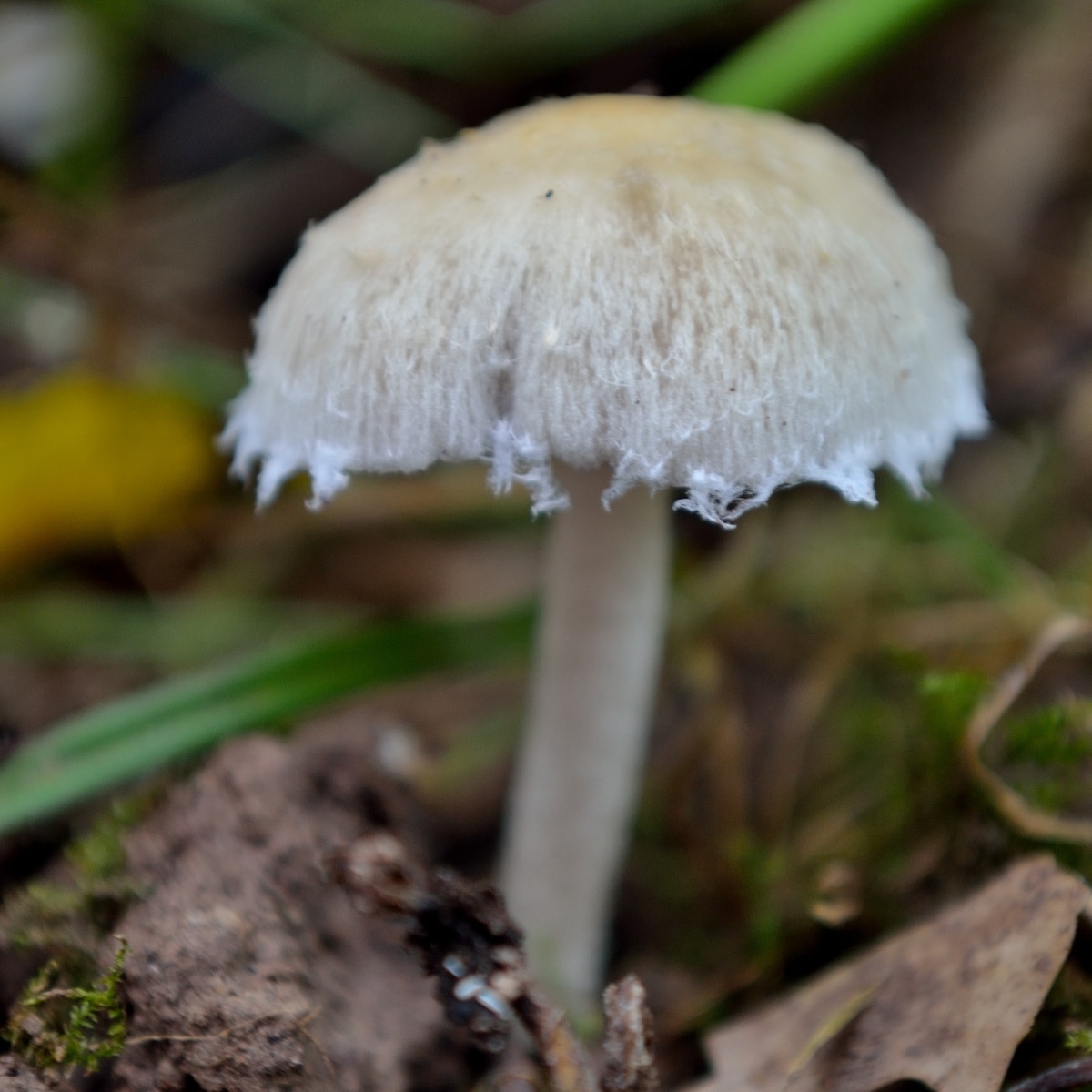
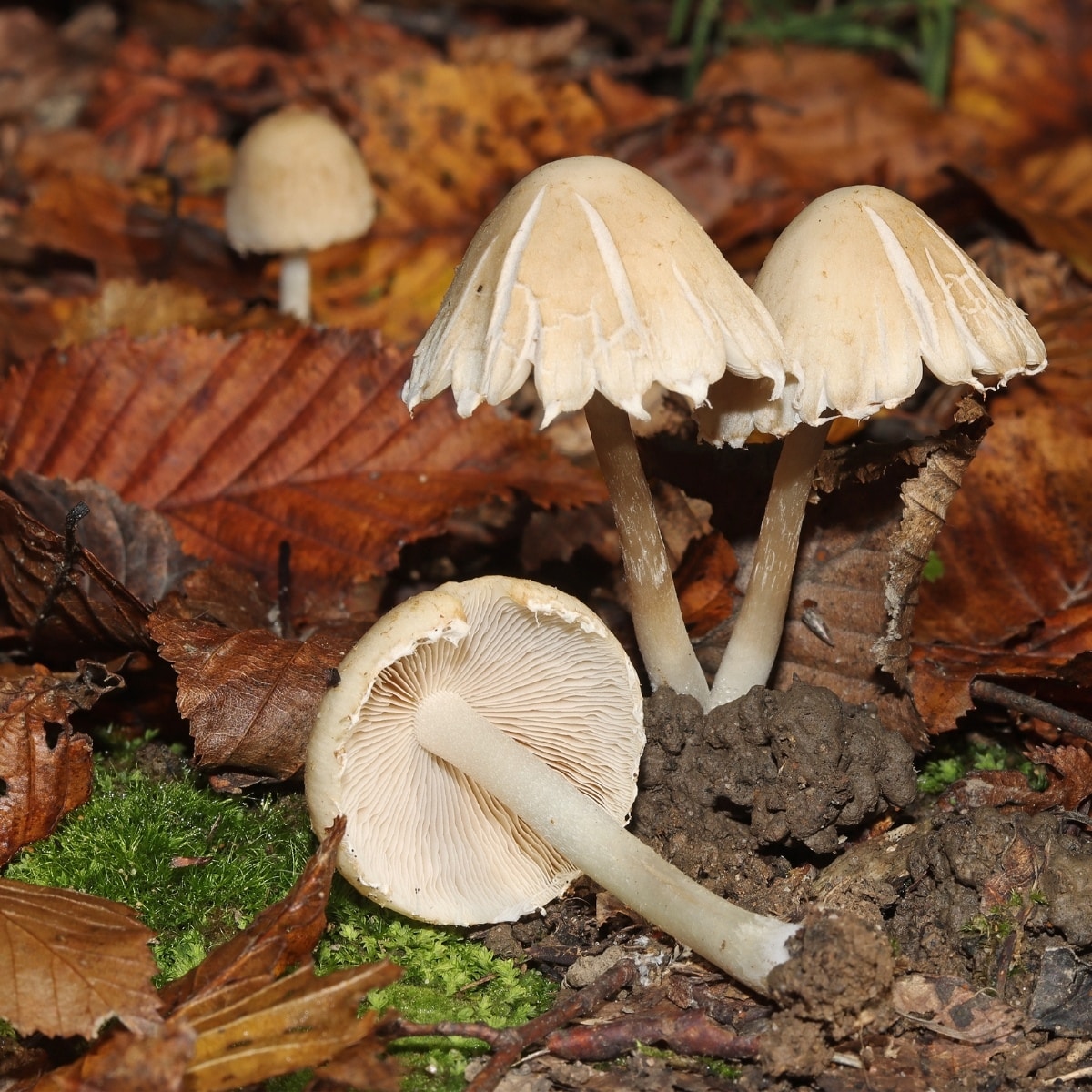
Panaeolus species
These mushrooms are also saprotropic and found growing on the ground. Panaeolus species and weeping widows both have mottled gills. As the spores mature unevenly, the gills develop a spotted or cloudy appearance, hence the common name. With Panaeolus species, the gills start pale and darken to black as the spores mature. On the other hand, the weeping widow has gills that start yellow-brown and become dark brown and mottled black.
Panaeolus mushrooms are generally smaller than the weeping widow. Their caps usually only get up to 2 inches in diameter, while the weeping widow’s cap can reach 4.7 inches. Panaeolus caps are often bell-shaped when young, becoming more flattened with age, and can vary in color from dark brown to tan. The weeping widow also starts bell-shaped but has a distinct umbo (central bump) and is covered in red-brown or yellow-brown hair-like fibers.
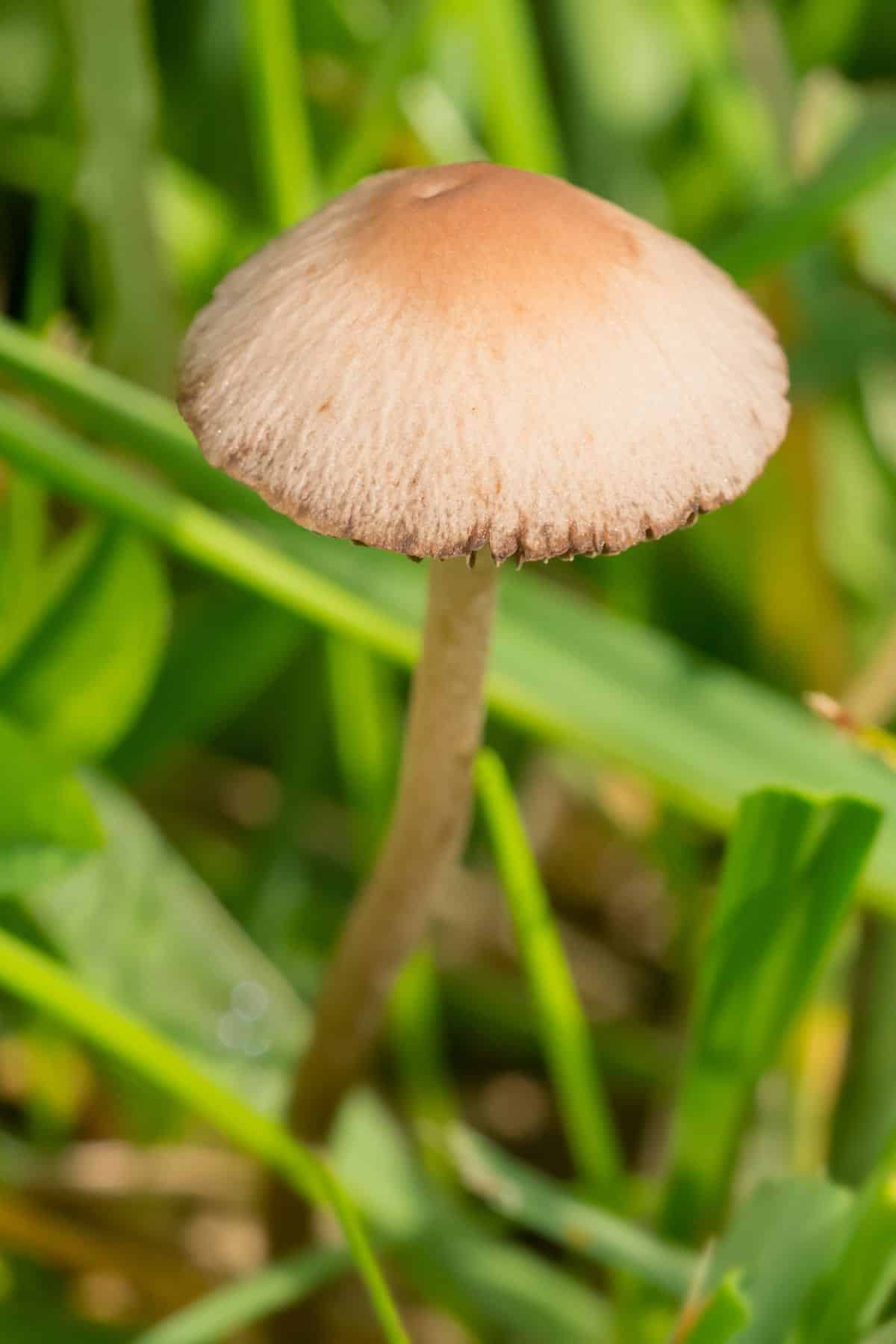
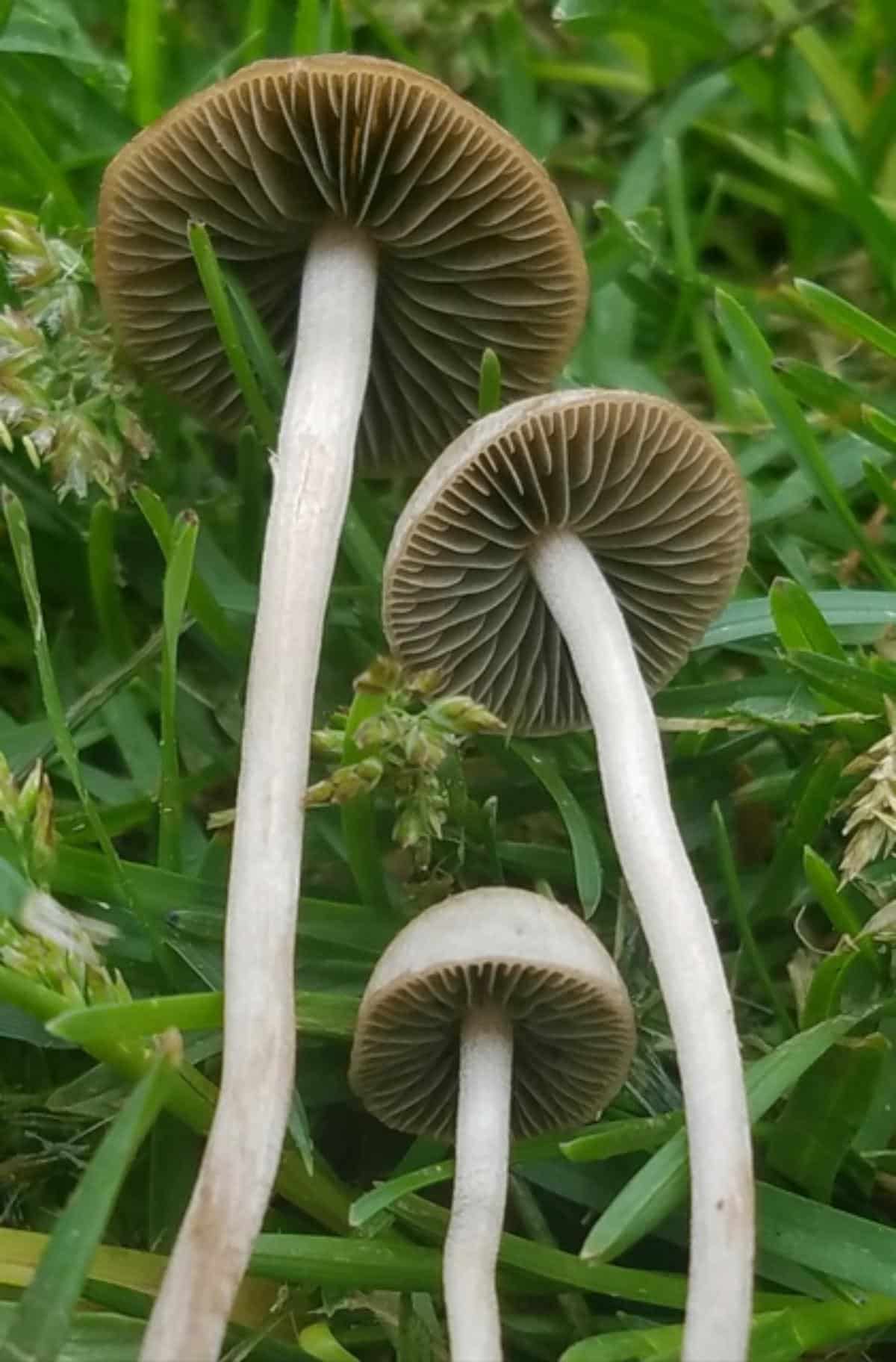
Common Questions About Weeping Widow Mushrooms
When is the best time to find weeping widow mushrooms?
These mushrooms typically fruit in the late summer to early fall. Keep your eyes peeled from August through October for the best chance of spotting them.
Where do weeping widow mushrooms typically grow?
Weeping widow mushrooms grow on disturbed ground. They are commonly found in urban and suburban areas.
Are weeping widow mushrooms edible?
Weeping widow mushrooms are not considered edible.
Why are they called “weeping widow” mushrooms?
The name “weeping widow” comes from their distinctive appearance. The cap is covered in thick fibers that resemble mourning attire. And the gills produce droplets that give the illusion of tears, evoking the image of a grieving widow.
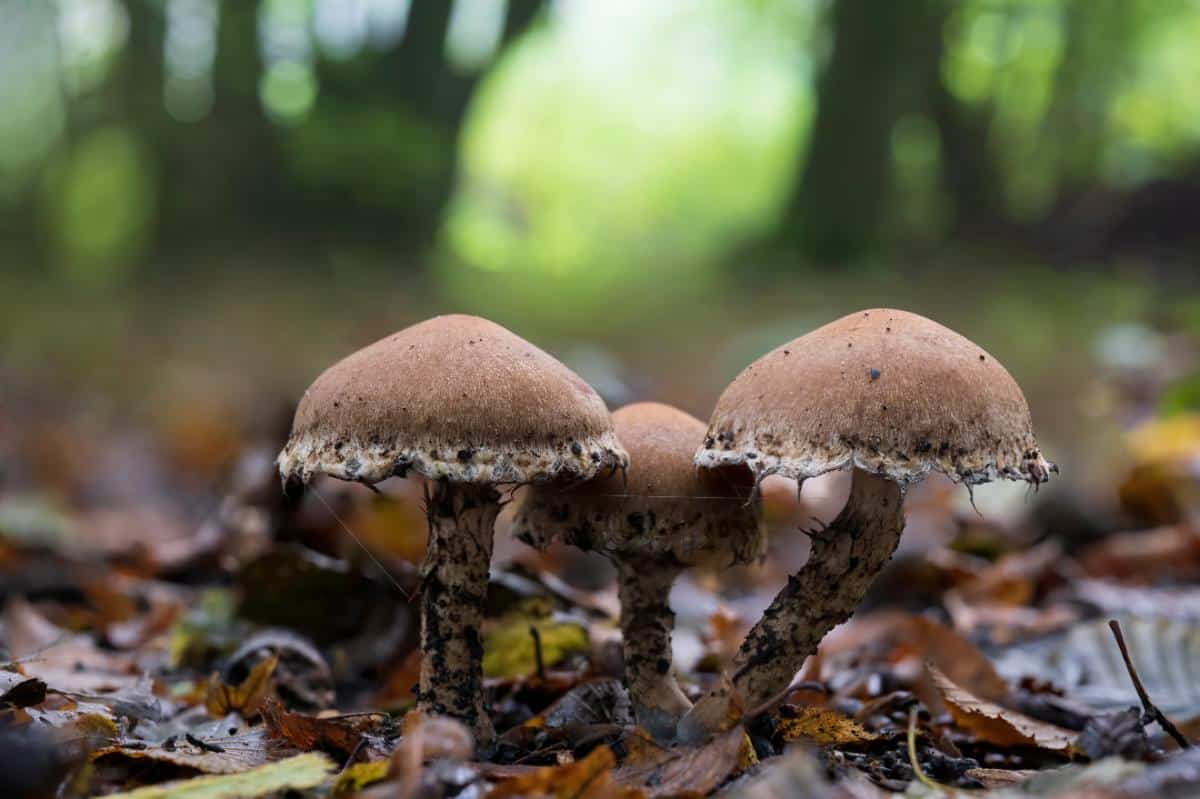


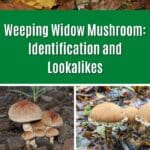
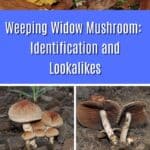
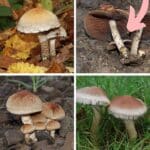
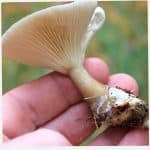



Leave a Reply